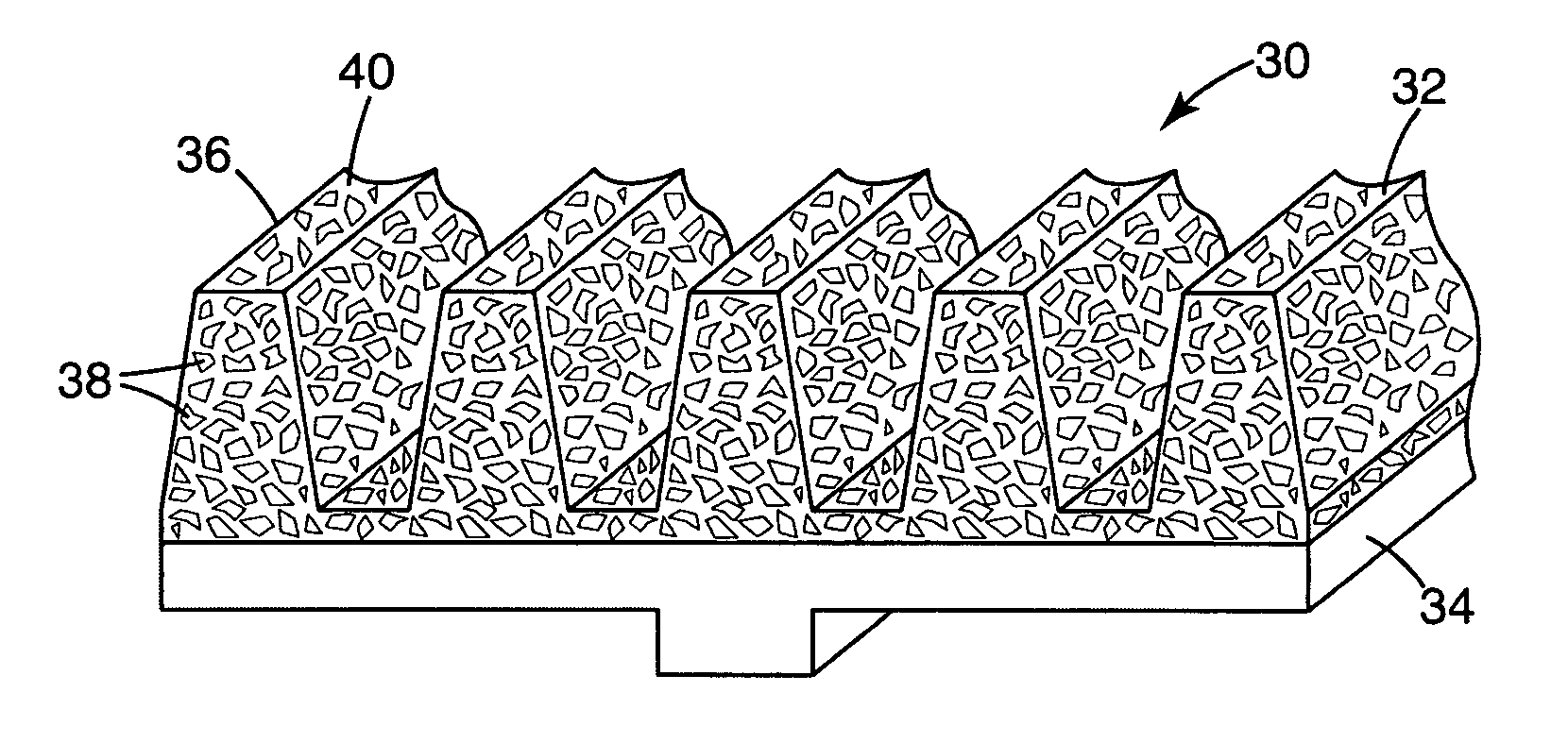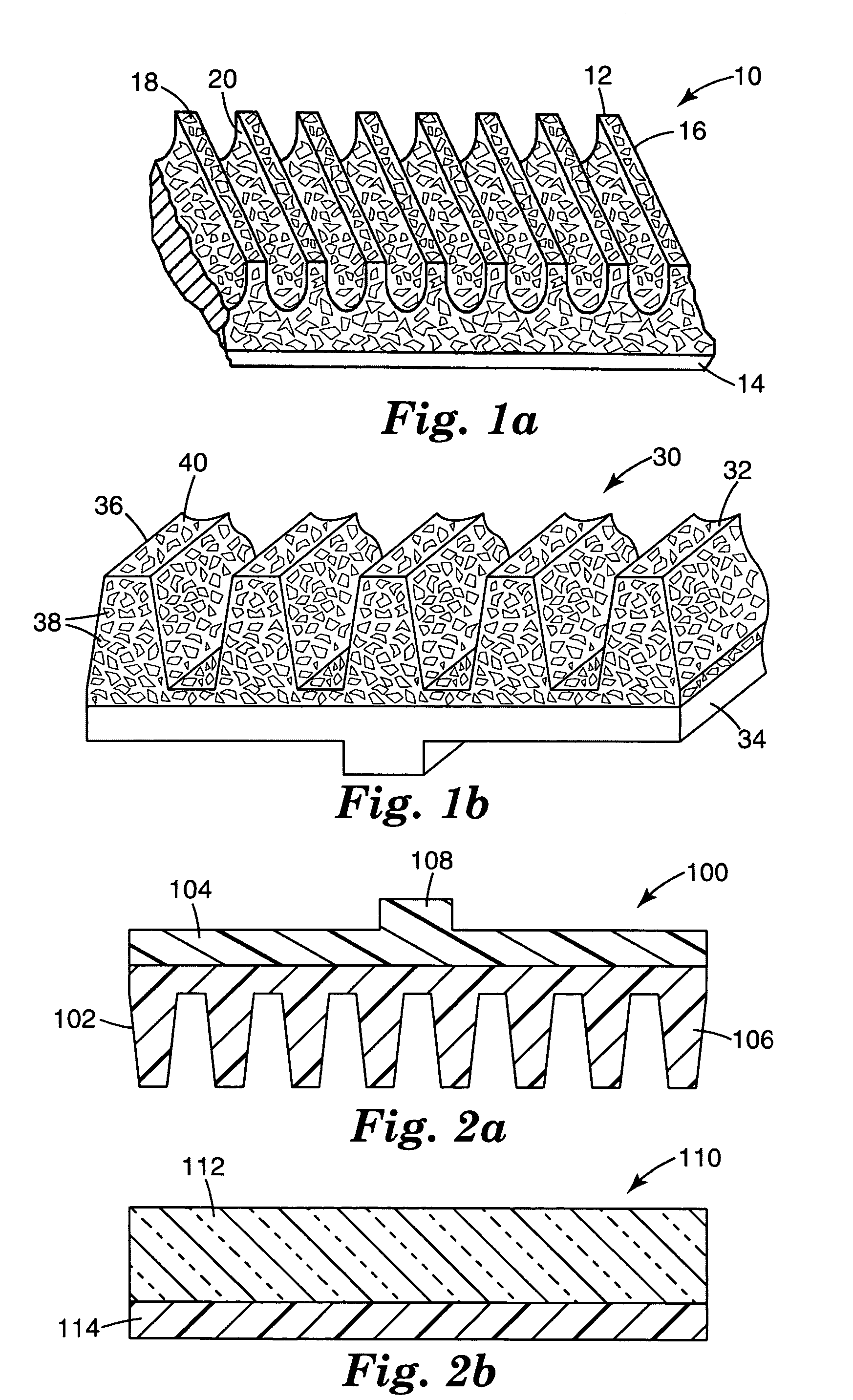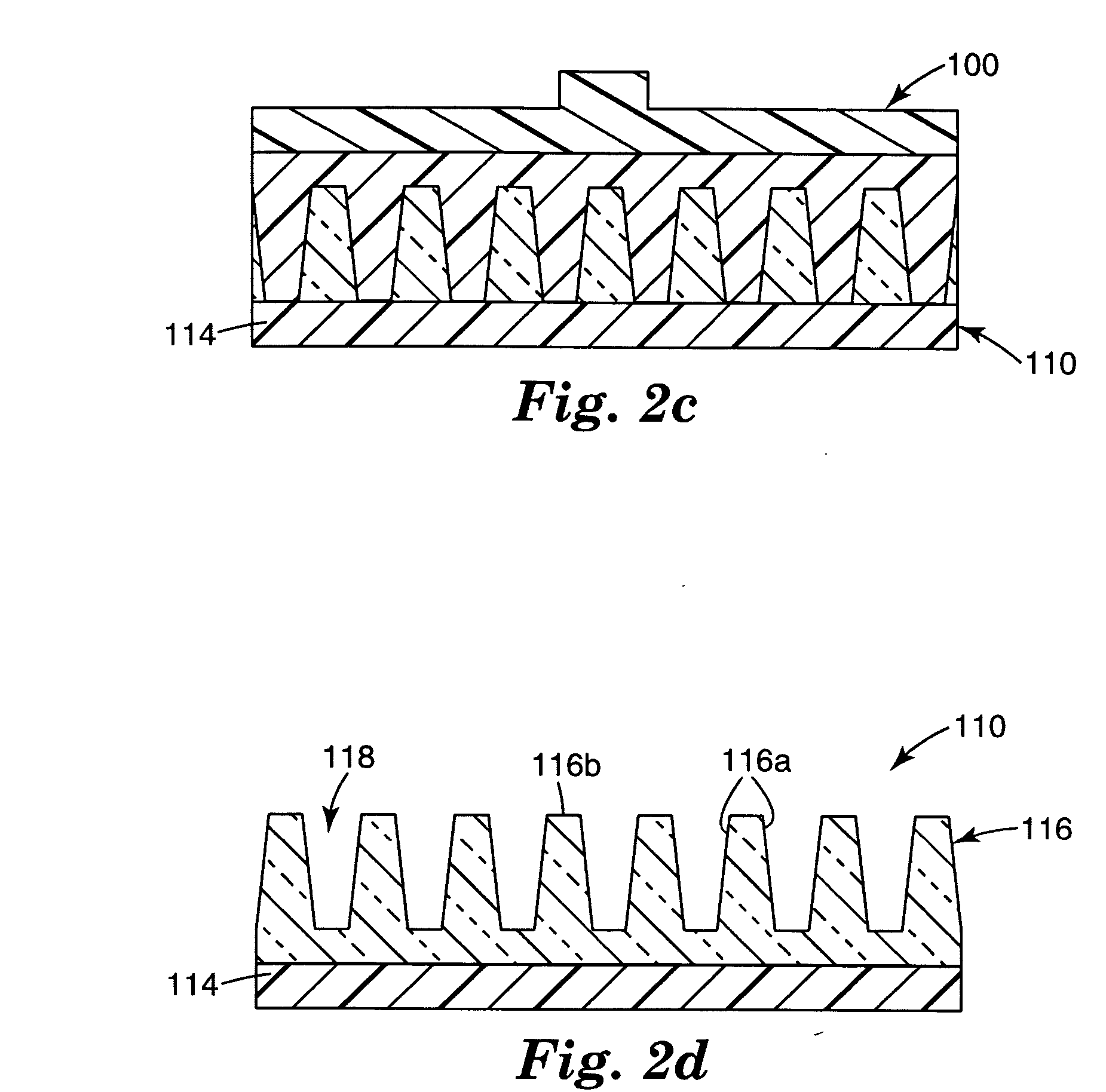Process for manufacturing a light emitting array
a technology of light-emitting arrays and manufacturing processes, which is applied in the manufacture of electrical discharge tubes/lamps, manufacturing tools, and manufacturing of electrical systems, etc., can solve the problems of one of the slowest and most expensive processes for producing a large number of optical elements
- Summary
- Abstract
- Description
- Claims
- Application Information
AI Technical Summary
Benefits of technology
Problems solved by technology
Method used
Image
Examples
Embodiment Construction
[0013]FIGS. 1a and 1b show representative embodiments of patterned abrasive 10, 30 for abrading substrate material to form an array of individual optical and / or semiconductor elements. As used herein, abrading may include abrading and polishing substrate material simultaneously, however, polishing may occur as a separate step. In addition, as used herein in regard to elements or shaped elements, “individual” and “singulated” refers to elements that are identifiable units but that are not necessarily detached from other elements. Likewise, singulating refers to forming identifiable units, which are not necessarily detached from one another. As shown, patterned abrasives 10, 30 include working surfaces 12, 32 and abackings 14, 34. Working surfaces 12, 32 includes protrusions 16, 36, particles 18, 38, and binder 20, 40.
[0014] Patterned abrasive 10, 30 is formed by applying a composite of particles 18, 38 dispersed in binder 20, 40 to backing 14, 24. Backing 14, 24 may be materials suc...
PUM
| Property | Measurement | Unit |
|---|---|---|
| thermal diffusivity | aaaaa | aaaaa |
| height | aaaaa | aaaaa |
| height | aaaaa | aaaaa |
Abstract
Description
Claims
Application Information
 Login to View More
Login to View More - R&D
- Intellectual Property
- Life Sciences
- Materials
- Tech Scout
- Unparalleled Data Quality
- Higher Quality Content
- 60% Fewer Hallucinations
Browse by: Latest US Patents, China's latest patents, Technical Efficacy Thesaurus, Application Domain, Technology Topic, Popular Technical Reports.
© 2025 PatSnap. All rights reserved.Legal|Privacy policy|Modern Slavery Act Transparency Statement|Sitemap|About US| Contact US: help@patsnap.com



